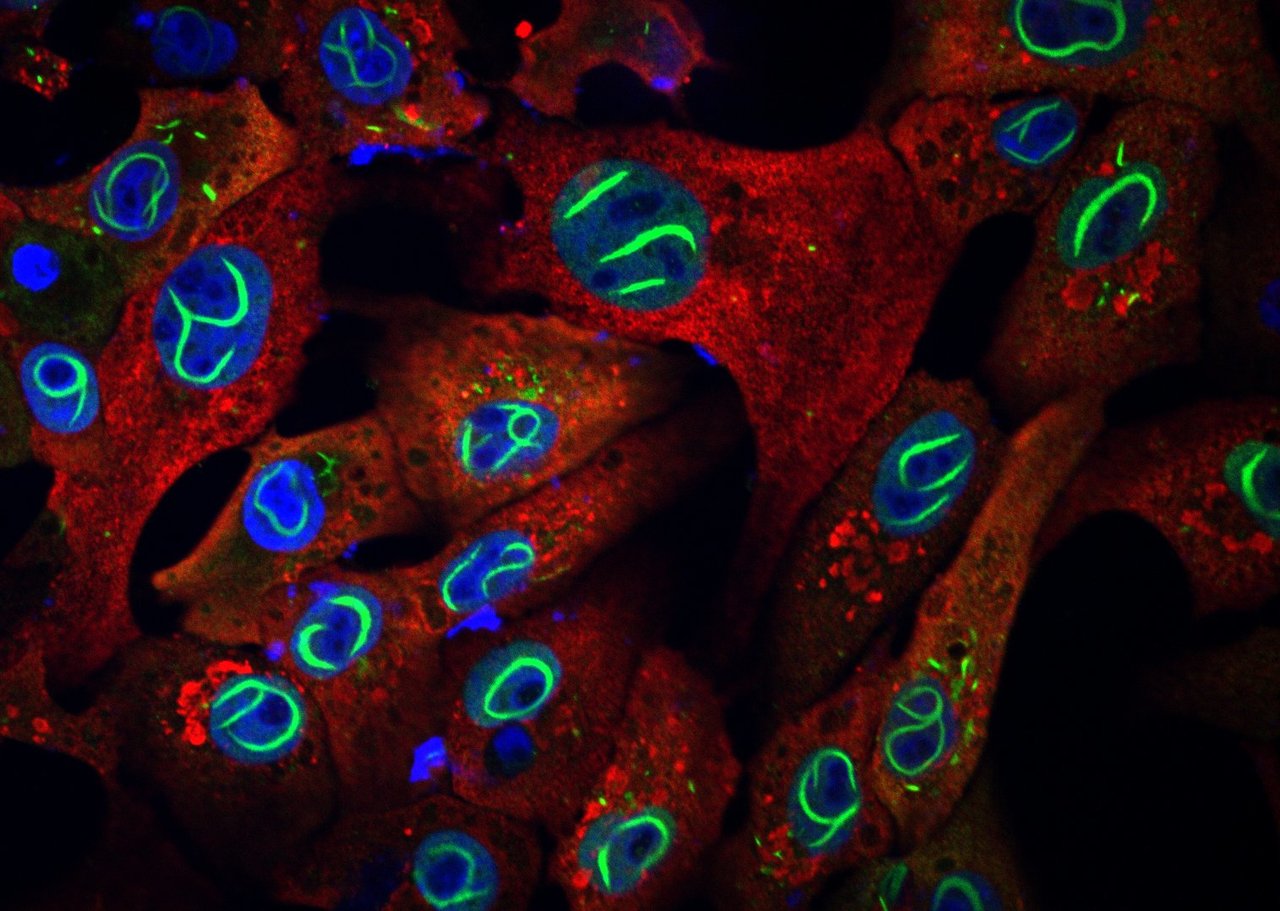The study
The elegant simplicity of viruses has always fascinated me, so basic but so frighteningly effective. Our study highlights the importance of NSs amyloid formation in antagonizing type I interferon responses in infected cells. With this work, we propose a correlation between presumably toxic viral amyloid-like fibrils in the brain and the virus-induced neurotoxicity in animals. Although the project was born in Heidelberg in 2014 its roots are much anterior.
It starts here
In 2008, I was a postdoc in the lab of Prof. Ari Helenius (ETH Zurich), investigating virus-receptor interactions. Within this project, I had the opportunity to collaborate with Dr. Michèle Bouloy (Institut Pasteur), an international expert on RVFV and NSs. We investigated the role of human C-type lectins in RVFV entry [2]. In her lab, I met Psylvia Léger, a PhD student that would become my first postdoc in Heidelberg a few years later.
Back to the future, 2014, Year 1 of the NSs project
I settled my own group at the University Hospital Heidelberg in 2013, within the virology department led by Prof. Hans-Georg Kräusslich. Magalie Mazelier, a PhD student, and Psylvia were my first two lab members in Germany. The initial project of Psylvia was on early stages of bunyavirus transmission. After showing me only a few immunofluorescence images of the NSs filaments that she obtained during her thesis in the Bouloy’s team, I did not hesitate to quickly change my initial plans and investigate these astonishing structures. In the end, Psylvia will never have worked on bunyavirus transmission in my lab. The NSs project is officially launched in 2014.
The importance of coffee breaks in science!
Another crucial encounter found its origin in Zurich. When I was establishing my lab in Germany, Prof. Helenius (Switzerland) put me in contact with his old friend, Dr. Jürgen Kartenbeck (DKFZ, Heidelberg). I enjoyed several coffees and scientific discussions with Dr. Kartenbeck, which prompted him to introduce me to Dr. Karsten Richter, an expert in electron microscopy. Together, we obtained the first micrographs of NSs filaments in 2016, and Dr. Richter immediately noticed the close resemblance between NSs and amyloid fibrils. In other words, coffee breaks opened the way for new horizons! What else?
A great time
Dr. Carmen Nussbaum-Krammer (ZMBH, Heidelberg) and other colleagues from Heidelberg then joined the “NSs project”, bringing their experience in amyloid proteins and various high-end microscopy techniques. The last to join, Drs. Xavier Montagutelli and Marie Flamand, with the excellent technical help of Carole Tamietti, made it possible to ascertain our hypothesis in mice. It was a big collaboration and a great adventure in the end, working all together in an excellent atmosphere.
What next?
Viruses can be scaring and threatening as illustrated by the current coronavirus pandemic. Most viruses are however not human pathogens. Many have taught us a lot about ourselves, and discoveries have revolutionized biology; to cite just one example, the reverse transcriptase of retroviruses. We sincerely hope that our own contribution will also serve future research on viral amyloid-like proteins and the nearly 50 human-encoded amyloid proteins, many of which are associated with severe disorders such as Alzheimer's disease [3]. On our side, we are already up and running!
Thanks people!
This work is the first major achievement of my team that is not in the scope of my core expertise, i.e. the cell biology of virus entry. I want to thank University Heidelberg, and especially Prof. Kräusslich, for giving me the freedom to develop my own science in his department over the last 7 years. I also much appreciate his current support in the next phase of my career. I then wish to acknowledge the financial support of CellNetworks and the German Research Foundation (DFG), which is highly appreciated given that research on emerging viruses remains globally neglected. Finally, I warmly thank my team and all the other great persons who contributed to this work, directly or indirectly, including my wife and kids for their patience!

From top left to bottom right: Pierre-Yves Lozach, Christian Najjar, Anja Hoffmann, Psylvia Léger, Jana Koch, Shawon Gupta, Zina Uckeley, Stefan Windhaber, Franziska Wölfl, Felix Pahmeier, and Felix Streicher.
The full paper can be found @ https://www.nature.com/articles/s41467-020-17101-y
References
1. Wright D, Kortekaas J, Bowden TA, Warimwe GM. Rift Valley fever: biology and epidemiology. The journal of general virology 100, 1187-1199 (2019).
2. Lozach PY, et al. DC-SIGN as a receptor for phleboviruses. Cell host & microbe 10, 75-88 (2011).
3. Knowles TP, Vendruscolo M, Dobson CM. The amyloid state and its association with protein misfolding diseases. Nat Rev Mol Cell Biol 15, 384-396 (2014).







Please sign in or register for FREE
If you are a registered user on Research Communities by Springer Nature, please sign in